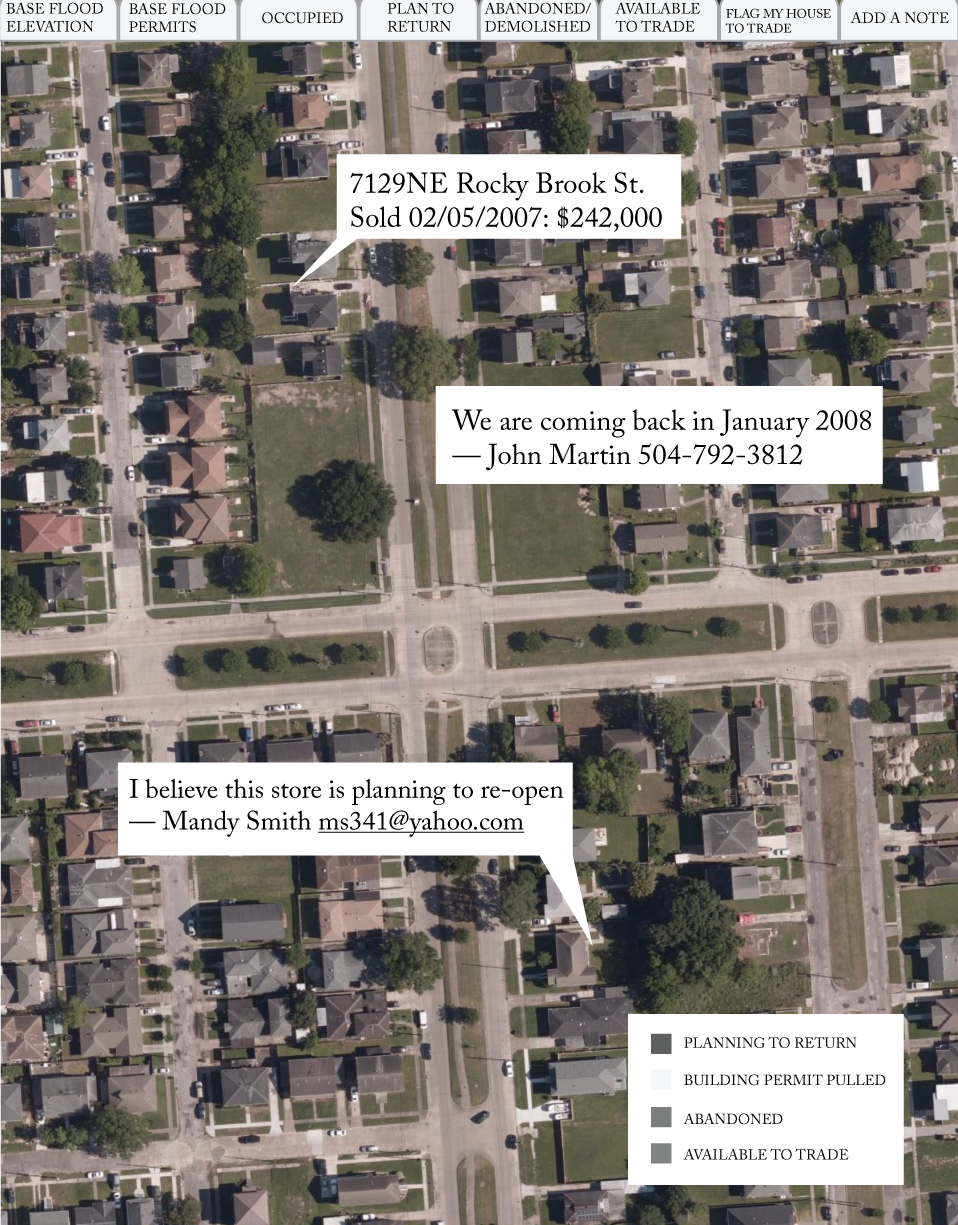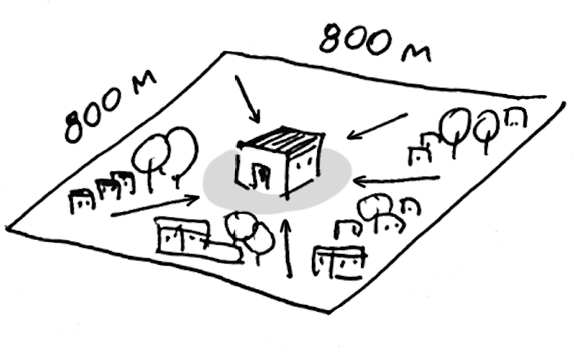…In order to accomplish neighborhood-scale improvements in Slum Upgrade, Sprawl Retrofit, Urban Regeneration and Urban Consolidation, it is necessary to work closely with residents, who will act as co-developers in almost all cases. An institutional framework is needed.

__Problem-statement: Many people participate in small-scale development at the neighborhood scale, in effect “co-producing” the city. They need neighborhood-scale resources to help them.__
Discussion: Homeowners and business owners who are engaged in development of their properties face a bewildering environment of obscure and often contradictory requirements: technical demands for rebuilding based upon highly local conditions; financial requirements of insurance companies, mortgage lenders and government agencies (often in conflict); and planning and permitting requirements that present multiple options and multiple potential problems.
The neighborhood planning center is a way to bring resources to where they are needed — the neighborhood scale. The centers are places where informal discussion and peer-to-peer exchange of information can take place — both physically, and through a web-based component. They are also venues for periodic community meetings on timely topics of city-wide and local planning issues. No less importantly, they are places for the efficient distribution of knowledge and expertise on topics like construction systems, historic preservation, green building and other topics.¹
The centers also give residents the opportunity to participate in planning of their own neighborhoods, and development of planning regulations such as zoning, coding and enforcement provisions. The residents can also develop versions of their own pattern language (both individually and as a neighborhood) to help to coordinate the growth of their neighborhood in a beautiful and diverse way.
Such a center goes to the heart of subsidiary self-governance, which has been unfortunately undermined by an “age of experts.” In traditional societies the world over, neighbors made (and still make) collective decisions about the shape of their environment and the governance issues posed there. With the coming of industrialization, this authority increasingly passed into the hands of governments, which (as history shows) often made catastrophic planning mistakes. Today we are struggling to restore a healthy balance between local and central decision-making. All over the world, this process is newly emerging, sometimes called “peer-to-peer urbanism”.
__Therefore: Create a series of neighborhood planning centers, one for each walkable neighborhood area (roughly 800 x 800 meters or ½ mile x ½ mile).__

Provide digital resources for the centers, including Augmented Reality Design tools and Citizen Data tools, including community wikis and other resources tools. …
notes
¹ A neighborhood planning center scheme was proposed for New Orleans by our team at Sustasis Foundation and Sustasis Press, with the participation of Christopher Alexander, Ward Cunningham and others. A limited version of the scheme was implemented by the Neighborhoods Partnership Network. See Mehaffy, M. et al. (2007), Neighborhood Renaissance Centers: Information and Resources Where They’re Needed For Rebuilding After Hurricane Katrina. Portland OR: Sustasis Foundation. Available on the Web at Sustasis.org/NRCs.pdf.
See more Implementation Tool Patterns